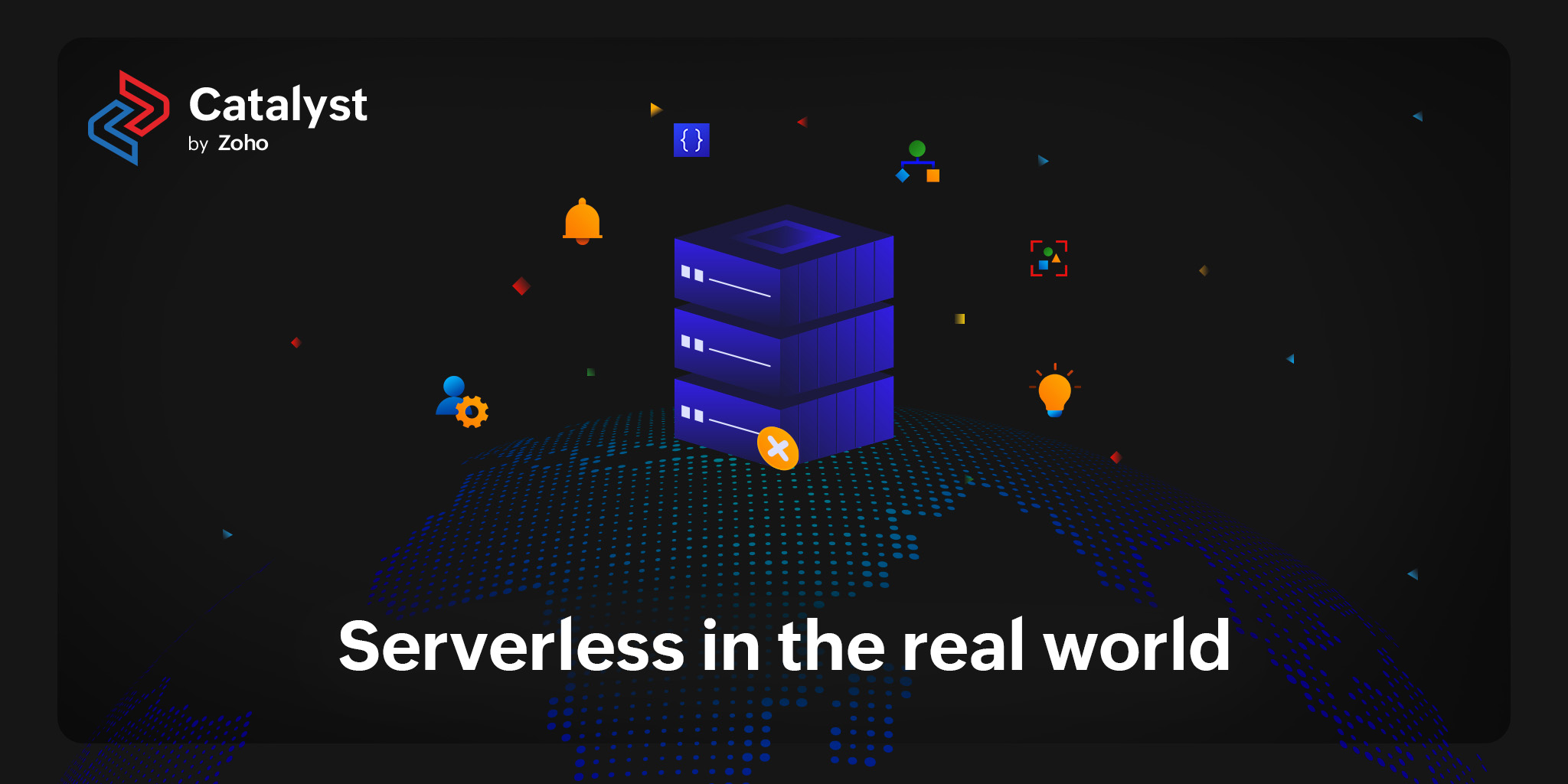- HOME
- You're paying for servers. Why aren't they working for you?
You're paying for servers. Why aren't they working for you?
- Last Updated : October 10, 2023
- 1.8K Views
- 4 Min Read

This is an article by Ryan Bickert—the grand prize winner of #CatalystServerless Blogathon contest.
When I decided to launch my first standalone business, I chose to build my website with Catalyst. I started without any good web development experience or understanding of an API. Fast forward five months—I have learned several web development languages and can now take credit for building my full-stack eCommerce website.
So, what can you do with Catalyst? Before we dive into that, let's rewind and see how companies have traditionally operated.
A look back at data recording
In the proverbial business Stone Age, companies physically recorded each order, and employees manually filled them in the order they were received—that's how many restaurants still operate. Later, in the "Bronze Age," spreadsheet programs, like Excel, dominated the business world. Again, employees would record each order (this time digitally), and manually fill them. This process did not require much technical know-how, but it did require manual effort.
Recently, another paradigm has been gaining traction. Companies are catching on to the fact that cloud computing can make our lives easier. It can be used for automating orders, adding clients to customer relationship management (CRM) software, taking payments, sending receipts, and even fulfilling orders automatically. Through all these processes, servers are the "unsung heroes," modernizing infrastructure, reducing manual effort, and increasing profitability.

Do I really need a server to run my business?
All businesses need and use servers. When you send an email, view a Google Doc, or add your newest sale to Zoho CRM, you use servers that are managed by a cloud provider. Most of your business operations rely on these servers.
Odds are, you don't have a dedicated server room down the hall. If you did, you'd know about the outrageous cost of purchasing even bare servers, the constant maintenance required, and the impact of servers on an electricity bill. Luckily, the industry is trending towards serverless—an application development and execution model that lets you build and run applications and services without physically maintaining servers.
Serverless to the rescue
"Serverless" is not necessarily the most appropriate term. It suggests that there are no servers in use, but that's not the case. The servers are simply run by someone else, somewhere else, and you get to experience the benefits for a nominal fee.
With serverless code execution, you can automate your business and maximize efficiency. This is how you can take a day, week, or month off and know that your business will continue running smoothly. How can you start taking advantage of all serverless has to off? Time to write some code.
That is an overwhelming concept to many. The mere thought of all those brackets and semicolons is enough to send plenty of companies running back to pens and paper. The reality, however, is that even the smallest businesses (including the "you-are-the-business" companies) can take advantage of serverless.
Where can I use serverless?
When your customers are ready to purchase, your serverless website collects their payments, adds their details to your CRM, and updates your online accounting software to reflect the sale. It may even send the customer an online receipt, subscribe them to your newsletter, and schedule an automatic birthday email to surprise them in four months. It can also add their data to a batch to be sent to the digital marketing team with the latest customer analytics. That way, you'll know if you need to add more varieties of products from the same category or introduce new categories to attract similar customers. Finally, your serverless website sends a notice to the warehouse to ship out the product, or when applicable, ships a digital product automatically. With Catalyst, this process is both fast and affordable.
Have you ever had to field a complaint about a negative customer experience on your website? A traffic surge to your website could introduce scaling issues, causing the whole system to crash. How easily can you predict the demand to provision servers or infrastructure to avoid such a crash? Scaling issues and crashes can be prevented with a serverless platform, like Catalyst, which takes care of auto-scaling and accommodates website surge traffic.
Wrapping up
Serverless provides you with separate local, development, and production environments, to test your ideas without repercussions and iterate as quickly as you'd like. Businesses use serverless to experiment, quickly identify issues, iterate faster, and deploy codes immediately. From retail to banking, real estate to manufacturing, an increasing number of companies across industries are adopting serverless architecture, because they can see the value it provides.